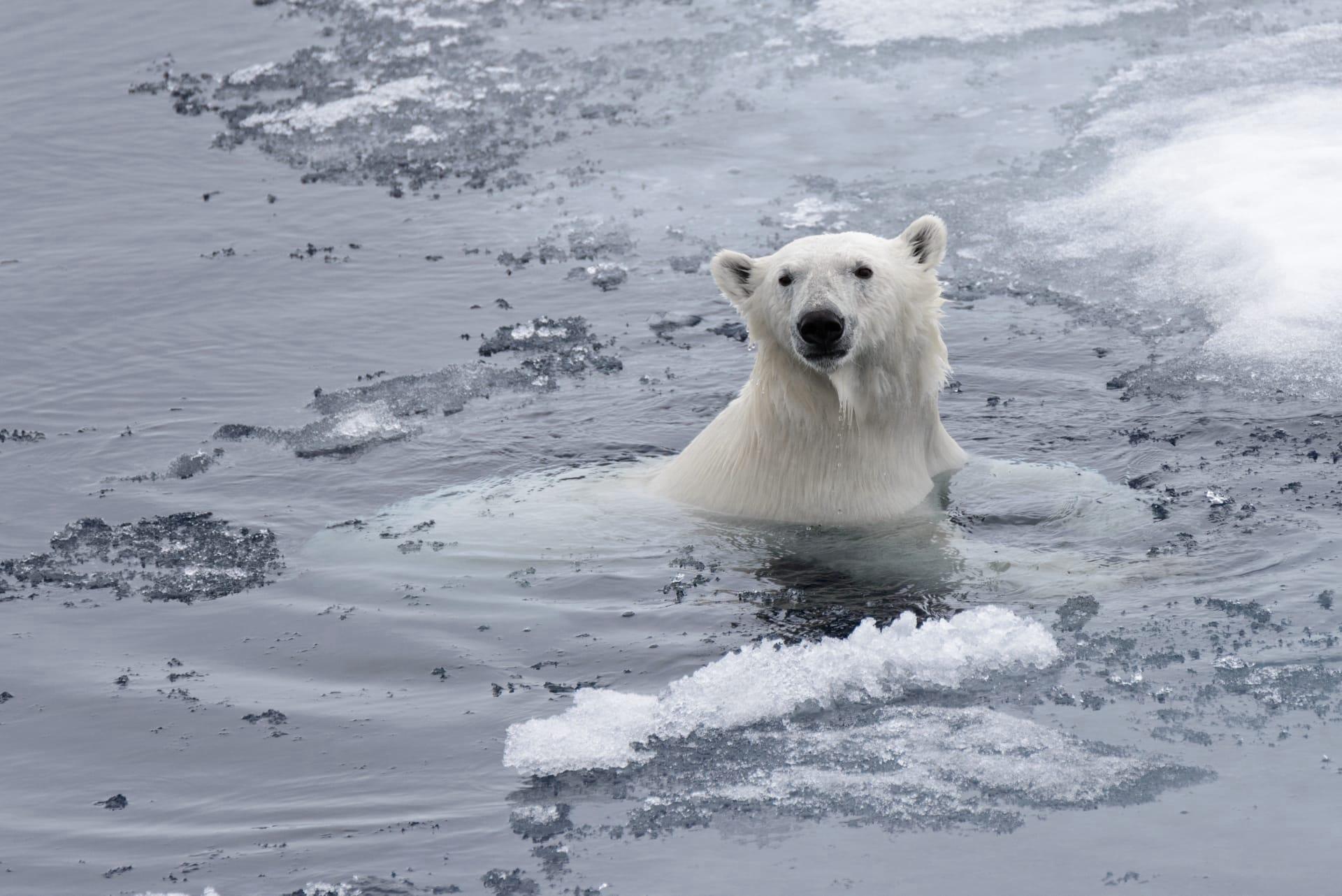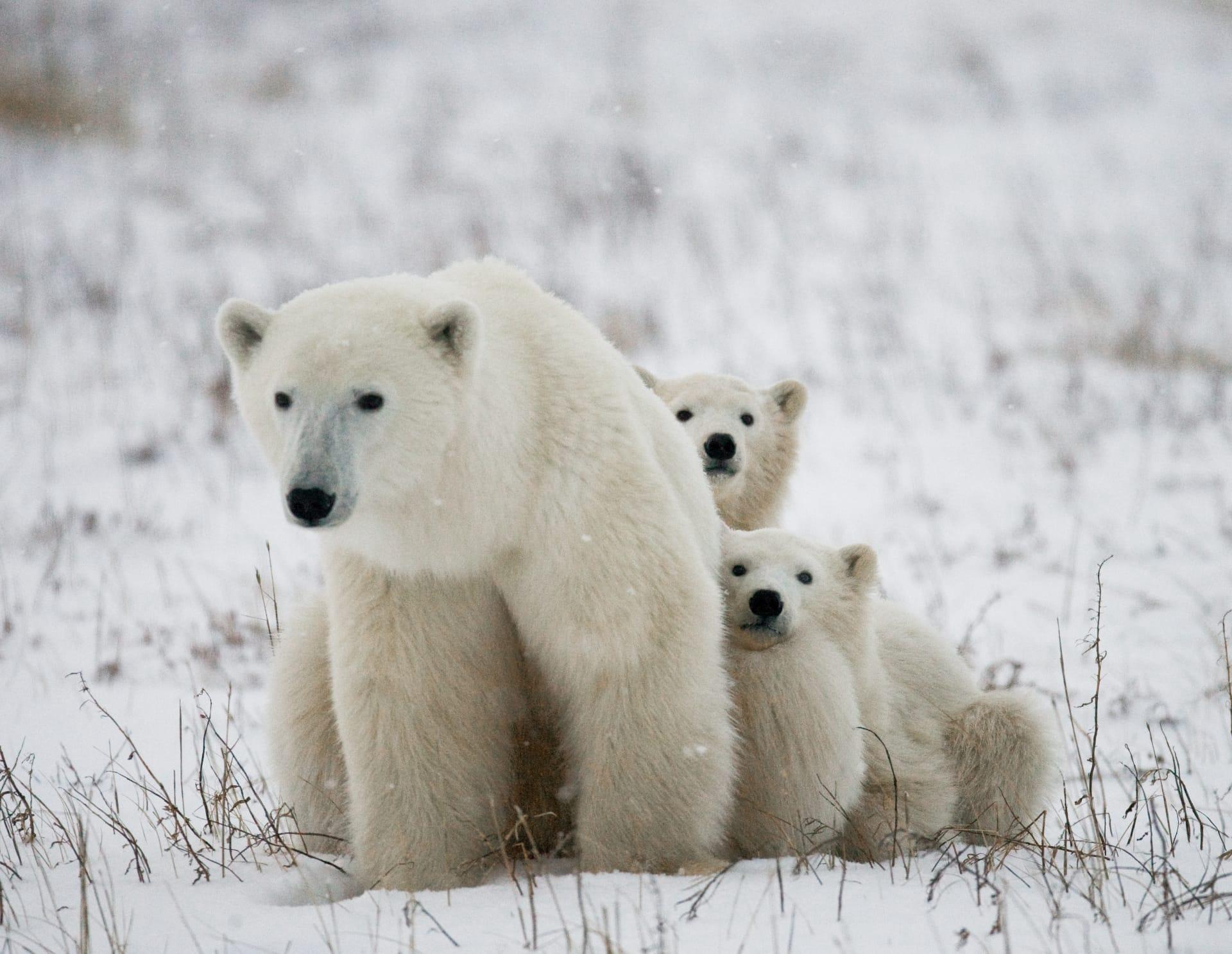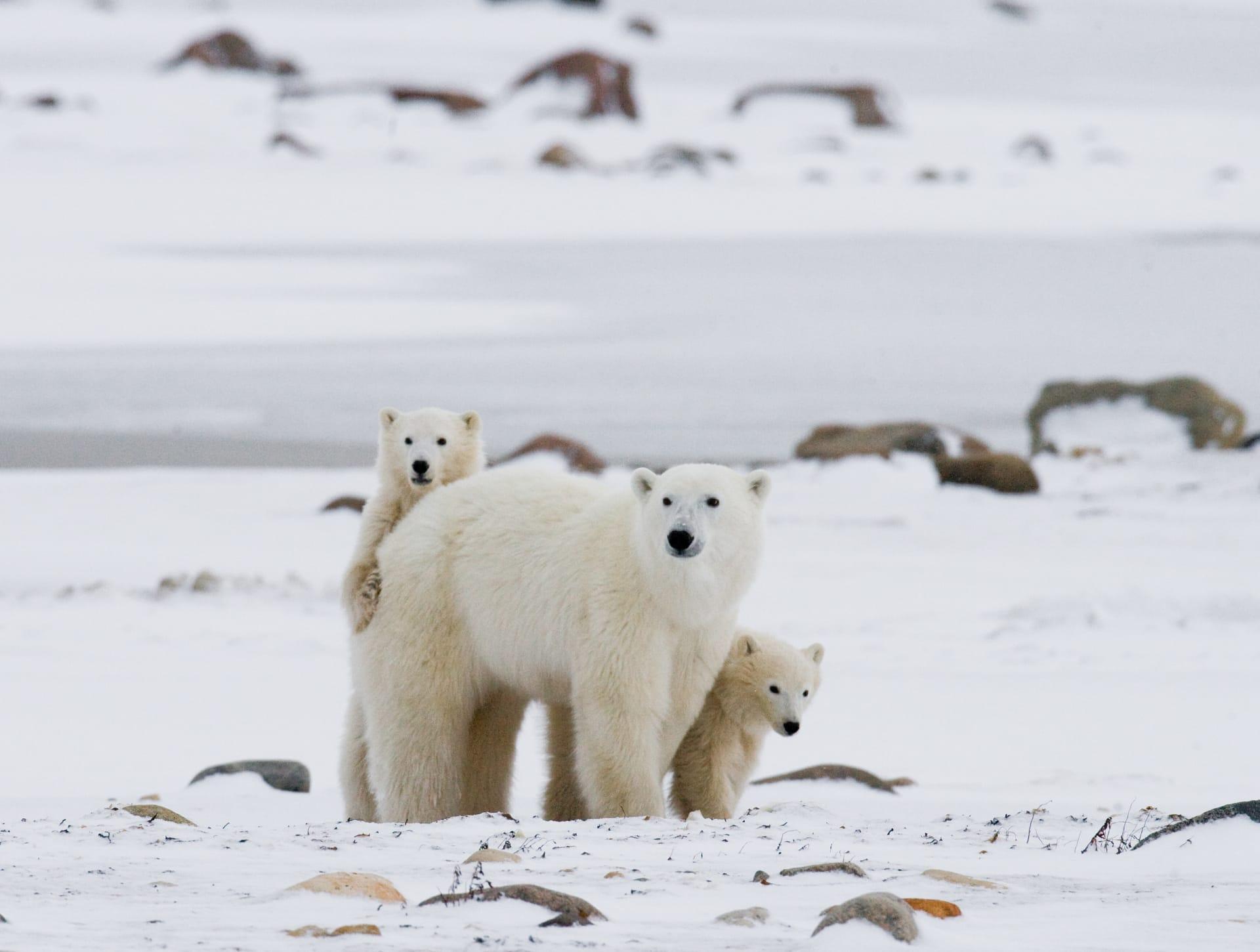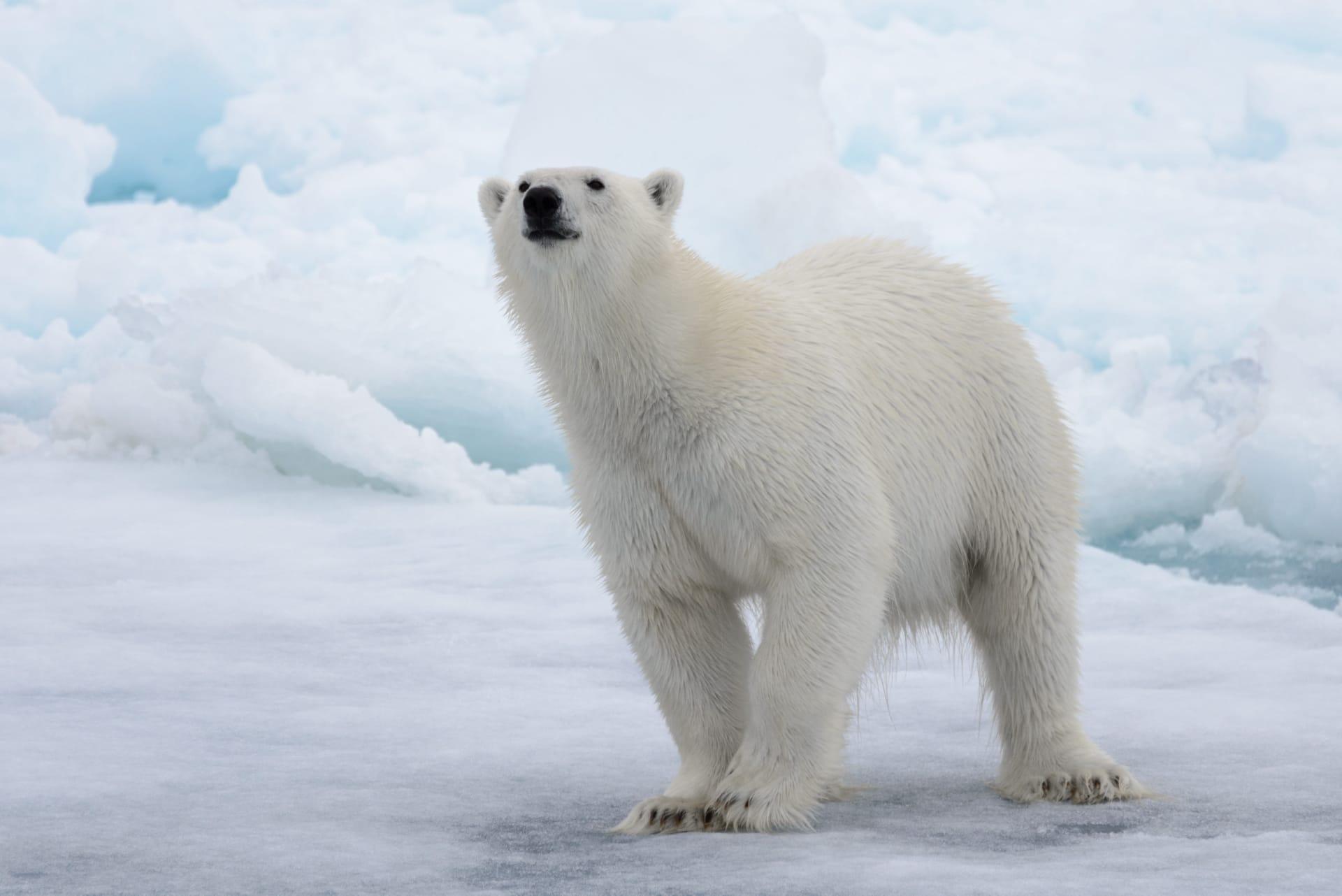Polar Bear Characteristics
- Home /
- Mini Encyclopedia /
- Animal /
- Polar Bear Characteristics
1
Polar bears, majestic giants of the Arctic, stand as the largest land carnivores in the world. Adult males typically weigh between 770 to 1,500 pounds (350 to 680 kilograms), reaching lengths up to 9.8 feet (3 meters) when standing on their hind legs. Females are about half the size of males, generally weighing between 330 to 550 pounds (150 to 250 kilograms). These bears have an average lifespan of 15 to 18 years in the wild, though some can live into their early 30s.
One of the most distinctive organs of a polar bear is its skin and fur. Contrary to popular belief, their skin is black, not white! This dark skin absorbs heat from the sun, crucial in their frigid habitats. The fur appears white but is actually translucent, reflecting visible light. Each hair is hollow, helping trap heat and keep the bear warm. This fur also helps polar bears to camouflage in their snowy environments, an essential for hunting.

2
Question: Why do polar bears have large paws?
Answer: Polar bears have evolved large paws, which can measure up to 12 inches (30 centimeters) across, to distribute their weight more evenly on ice and snow, acting like natural snowshoes. This adaptation prevents them from breaking through thin ice. The wide paws also assist in swimming, functioning as paddles. The underside of their paws has rough pads and fur, providing traction on the slippery ice.

3
Polar bears are strong swimmers, a necessity in their marine environment. They can swim for hours or even days, covering distances of over 60 miles (100 kilometers) without rest. They can reach speeds of 6 miles per hour (10 kilometers per hour) in water. Their front paws propel them forward while their hind legs are used for steering.
In terms of hunting, polar bears primarily prey on seals. They use a technique called still-hunting: waiting patiently near a seal's breathing hole in the ice. When a seal emerges for air, the bear uses its powerful forelimbs to deliver a lethal blow. Polar bears can also detect seals nearly a mile away (1.6 kilometers) and buried under 3 feet (1 meter) of snow.

4
The primary habitat of polar bears is the Arctic sea ice, where they roam the ice floes, primarily in areas of open water or thin ice, known as the 'Arctic ring of life'. They depend on the sea ice for hunting seals, their primary food source. As sea ice diminishes due to climate change, their habitat is under threat.
Reproduction for polar bears is seasonal, with mating typically occurring between March and June. Females give birth to one to three cubs after a gestation period of about eight months. Newborn cubs are extremely small, weighing only about 1.3 pounds (0.6 kilograms). They are born blind and depend on their mother in a den, usually made in snowdrifts, for warmth and nourishment during the first months of their lives.

5
Book: "Polar Bears: A Complete Guide to Their Biology and Behavior" by Andrew E. Derocher, published in the United States in 2012. Authored by a renowned biologist, this book provides an in-depth look at polar bears, discussing their biology, behavior, and the challenges they face. It combines scientific data with stunning photographs, offering readers insights into the lives of these magnificent creatures.
Book: "The World of the Polar Bear" by Norbert Rosing, published in Canada in 2006. Rosing, a celebrated wildlife photographer, presents a visually stunning journey into the world of the polar bear. The book is a compilation of his photographs, accompanied by narratives that delve into the natural history and fragile existence of polar bears in the Arctic.